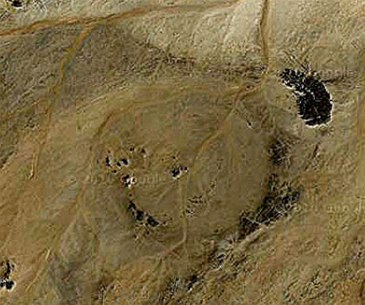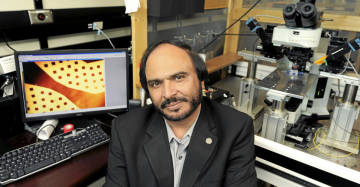The discovery of a new crater in the Bayuda Desert in Sudan suggests that the next generation of crater hunters could be amateurs based at home.

© Technology Review, MITCrater in the Bayuda Desert, Sudan.
Most of the rocky planets, moons and asteroids in the Solar System are pock-marked with impact craters of all sizes. On Earth, however, small craters are rare because they quickly get eroded by weather and water.
So the discovery of new small craters is a reason to celebrate. A couple of weeks ago, an Italian team
announced in the journal Science that it had used Google Earth to identify an impact crater in the remote desert of southern Egypt. A quick trip to the region showed this crater to be 45 meters in diameter and reasonably well-preserved in the desert rocks.
Now, just a few days later, Amelia Sparavigna at the Politecnico di Torino in Italy has found evidence of another crater in the Bayuda Desert in Sudan using Google Maps. This one is a little bigger: about 10 kilometres in diameter.
What's interesting about this discovery is the technology used to make it. Sparavigna used Google Maps, an astronomical image-processing program called AstroFracTool which she and a colleague developed, and an open source image-processing package called GIMP.
All of this stuff is available for free on the web, making this kind of discovery open to all. That means the next generation of crater hunters could just as easily be amateurs working from home as professional geologists working on location.
